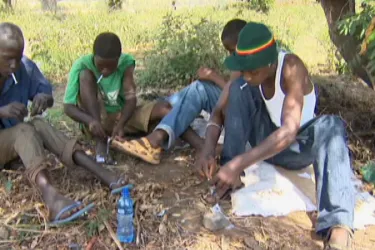1. Introduction
The Alcoholic Drinks Control Act, commonly known as the Mututho Law, was implemented in 2010 as a response to rising concerns over excessive alcohol consumption and its detrimental effects. While the law sought to curb alcohol-related harm, it also reshaped how Kenyans cope with stress, social bonding, and mental health challenges. This report examines its historical context, societal consequences, psychological effects, and adaptive mechanisms.
 |
| Fig.1 Mr. Mututho |
2. Historical Context
Before the Mututho Law, alcohol consumption was deeply ingrained in Kenyan social life. Pubs operated with minimal restrictions, and traditional brews like chang’aa and busaa thrived. However, issues such as alcohol poisoning, domestic violence, and unregulated production led to the introduction of stricter policies.
The Mututho Law was designed to:
- Regulate alcohol sales by restricting drinking hours (5 PM–11 PM on weekdays).
- Increase licensing requirements for bars and retailers.
- Impose severe penalties for violations.
- Ban alcohol advertising targeting youth.
Its introduction was met with public backlash, particularly from bar owners and local brewers, but was praised by health advocates who believed it would reduce alcohol-related deaths.
 |
| Fig 2. Illicit brewing in progress |
3. Implementation & Social Effects
Positive Outcomes
✅ Reduction in alcohol-related accidents – Reports indicate a decline in drunk driving cases.
✅ Lower cases of alcohol poisoning – Regulated brewing reduced the circulation of dangerous counterfeit alcohol.
✅ Improved work productivity – Reduced daytime drinking encouraged a more structured work ethic.
Challenges and Unintended Consequences
❌ Rise in illicit alcohol trade – Black market production of chang’aa continued, leading to untaxed and unregulated consumption.
❌ Shift in drinking habits – Some individuals binge-drank before closing hours, increasing intoxication levels in a short timeframe.
❌ Social disruption – Nightlife culture declined, affecting industries like entertainment, hospitality, and tourism.
❌ Bhangi & Ketermine Pandemic – Although yet to admit it is there, as a Country, Kenya is slowly advancing toward it.
 |
| Fig 3. Once a myth, now is normalcy |
4. Psychological & Societal Coping Mechanisms
Pre-Mututho Coping Methods
Before the law, alcohol was used as a stress reliever, a means of social bonding, and even a form of escapism. Community drinking spaces played a role in informal counseling, especially among working-class individuals.
Post-Mututho Coping Adaptations
- Religion – Increased engagement in faith-based communities for solace.
- Recreational drugs – Some shifted towards narcotics due to alcohol restrictions.
- Entertainment & digital spaces – The rise of social media platforms became an alternative for human connection and relaxation.
- Mental health conversations – Slow but growing public discourse on depression and alternative coping methods.
 |
| Fig 4. Currently... |
5. Suicide & Murder Rates Analysis
While direct data linking the Mututho Law to suicide and murder trends is scarce, existing patterns suggest:
📉 Alcohol-related violent crimes declined initially but persisted through illegal alcohol markets.
📈 Depression rates increased, particularly among marginalized communities where alcohol was a traditional coping method.
📉 Suicide awareness efforts grew, though underreporting remains a challenge.
 |
| Fig 5. And... |
6. Social Systems & Long-Term Impact
Government Influence
- Alcohol regulation influences coping mechanisms by limiting access but failing to provide adequate mental health alternatives.
- The criminalization of attempted suicide (recently overturned) highlighted the lack of a structured mental health safety net.
Cultural Shifts
- Traditional drinking customs evolved, with younger generations adopting different social habits.
- Corporate industries encouraged productivity by reducing alcohol-related workplace disruptions.
- Family structures adapted, with some households enforcing stricter drinking norms.
 |
| Fig 6. Yeah, right... |
7. Solutions & Policy Recommendations
✔ Expand mental health support – Introduce public counseling programs to counter the loss of traditional alcohol-based stress relief.
✔ Reform alcohol restrictions – Allow regulated local brews to reduce the black market trade.
✔ Strengthen youth engagement – Promote sports, creative arts, and community programs as alternatives to alcohol.
✔ Public awareness campaigns – Educate communities on healthy coping mechanisms beyond substance use.
 |
| Fig 7. Or better yet... |
8. Conclusion
The Mututho Law successfully reduced alcohol-related harm, but its impact on societal coping mechanisms, depression rates, and the underground alcohol trade reveals gaps in Kenya’s approach to mental health and stress management. Moving forward, a balanced policy—one that regulates alcohol while ensuring alternative coping strategies—is essential for a healthier, more adaptive society. or simply abolish this outdated law.
Comments
Post a Comment